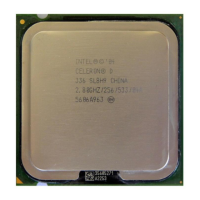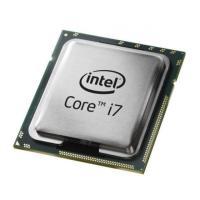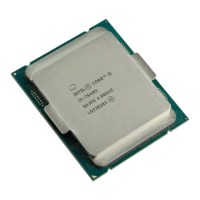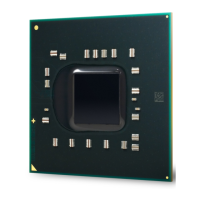Intel
®
Celeron
®
D Processor in the 775-Land LGA Package Thermal Design Guide39
Order #303730
LGA775 Socket Heatsink Loading
A.2.3 Board Deflection Limits
Deflection limits for the ATX/µATX form factor are:
d_BOL - d_ref= 0.09 mm and d_EOL - d_ref = 0.15 mm
and
d’_BOL – d’_ref= 0.09 mm and d_EOL’ – d_ref’ = 0.15 mm
Note: The heatsink preload must remain within the static load limits defined in the processor datasheet at
all times.
Note: Board deflection should not exceed board manufacturer specifications.
A.2.4 Board Deflection Metric Implementation Example
This section is for illustration only and relies on the following assumptions:
• 72 mm x 72 mm hole pattern of the reference design
• Board stiffness = 900 lb/in at BOL, with degradation that simulates board creep over time.
— Though these values are representative, they may change with selected material and board
manufacturing process. Check with your board vendor.
• Clip stiffness assumed constant – No creep.
Using Figure 15, the heatsink preload at BOL is defined to comply with d_EOL – d_ref = 0.15 mm,
depending on clip stiffness assumption.
Note: The BOL and EOL preload and board deflection differ. This is a result of the creep phenomenon.
The example accounts for the creep expected to occur in the board. It assumes no creep to occur in
the clip. However, a small amount of creep is accounted for in the plastic fasteners. This situation is
somewhat similar to the Intel Reference Design.
The impact of the creep on the board deflection is a function of the clip stiffness:
• The relatively compliant clips store strain energy in the clip under the BOL preload condition
and tend to generate increasing amounts of board deflection as the board creeps under
exposure to time and temperature.
• In contrast, stiffer clips store very little strain energy and therefore do not generate substantial
additional board deflection through life.

